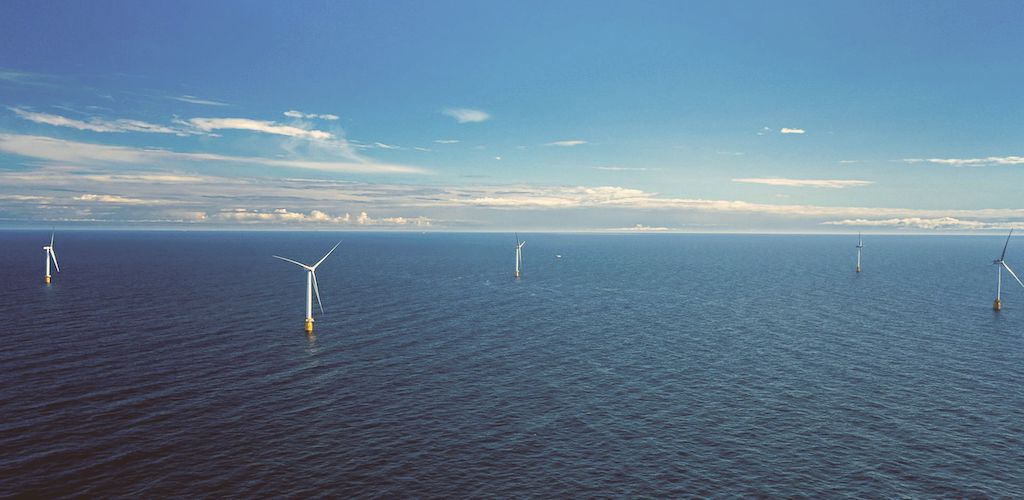(Europe) Hecate Independent Power Plans North Atlantic Project

By Malcolm Ramsay
The rollout of large-scale floating wind farms promises a number of opportunities for breakbulk operators as well challenges over the next decade, as developers seek to move further into deepwater territory.
The announcement that the UK plans to develop a huge floating wind project in the middle of the Atlantic, off the coast of Iceland, has raised the possibility that a new generation of wind farms may be untethered, not only from the seabed, but also from the markets they serve.
“Floating wind power offers the possibility of offshore wind even in deeper water depths and with greater coastal distances, so this development is important for the worldwide rapid development of the success story of offshore wind power,” Heike Winkler, managing director of German Industry Association WAB, told Breakbulk.
Beyond Territorial Waters
Hecate Independent Power’s (HIP) project, announced in the second quarter, envisages a 10 gigawatts of fixed and floating wind turbines installed in the North Atlantic. Not only will it set a record for a wind farm with floating wind turbines, it creates a number of logisticsal problems for transmission across but thousands of kilometers to the UK, where electricity is to be delivered.
HIP is an Anglo-American joint venture, composed of Hecate Wind, a wholly owned subsidiary of U.S. renewable developer Hecate Holdings, and Independent Power Corp., a UK developer of conventional power plants.
The developers plan to run long high-voltage direct current (HVDC) submarine power transmission cables from the site to the UK. The cables will be manufactured at a US$277-million complex custom built in the Northeast of England.
Sir Tony Baldry, chairman of HIP, said the project “will stretch the zone of British-operated wind generation outside of our traditional territorial waters, pushing the boundaries of existing cable technology to generate over 1,000 kilometers from our grid landfall points throughout England.” It is also expected to attract “investment and job creation in the North of England.”
Diversified Energy Portfolio
A further advantage of HIP’s planned offshore project in the North Atlantic will be that it is installed in a different meteorological catchment area from current North Sea and Irish Sea wind farms, meaning that electricity can be supplied at times when existing British wind farms are becalmed.
“This diversity of wind source provides a geographical portfolio effect to protect the UK transmission grid from too much offshore wind capacity installed in just one region,” a spokesperson for the firm explaied.
To date, nearly all wind farms have been located relatively close to the market they aim to supply, and while this typically makes delivery and installation of components simpler, it has limited the number of available sites. It also complicates planning with greater consideration required for shipping lanes. With these challenges the cost to site wind farms further out in deepwater has so far been prohibitive.
“We are watching the development of floating offshore closely as we do expect the cost of this technology to continue its downward trend,” Winkler said. “It is an important export solution and one part of offshore wind industrial development meant for deepwater conditions or floating PV solutions or floating hydrogen offshore applications.”
Winkler highlights the Floatech research project, a development that WAB helps steer via a seat on its advisory board, which works with cooperating clusters in international exchange on the topic of floating offshore wind power. Funded under the EU’s Horizon 2020 project the Floatech project is coordinated by TU Berlin and implemented by partners from four EU countries.
“Due to shallow waters off the German coastline, we expect floating offshore wind to only play a minor role in the short-term future [but] as Europe continues building up its floating project pipeline and with plans in place in other markets such as the US, Korea, or Japan, this technology could offer excellent export opportunities,” Winkler added.
Equinor Targets 10GW
This view is echoed by energy major Equinor, which has already invested heavily in the technology, launching the world’s first full-scale floating offshore wind farm in 2017. The Hywind Scotland has since proven the case for the company, with plans to expand development globally.
“There is a lot of talk about floating wind. Equinor began walking the talk in 2017. We are now regularly approached by government asking us about the potential we see in floating wind and we tell them that ... to us this is proven, we are not reliant on more pilots,” said Pål Eitrheim, executive vice president for renewables at Euiqnor, “The path to commercialized floating goes through upscaling, and I think it is great to see that new floating opportunities are now underway in Europe, in the U.S. as well as in Asia.”
Equinor has announced plans to add 10 gigawatts to its access offshore wind pipeline over the next three years and longer term sees even greater potential
“A net zero world needs offshore wind to grow fast and to do it at scale. Offshore wind is probably as close as you’re going to come in terms of renewable providing baseload power,” Eitrheim said. “Close to 80 percent of this offshore wind growth will have to require floating solutions.”
